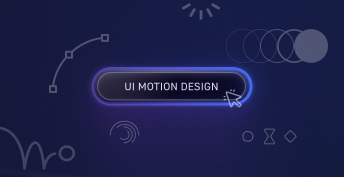One of our recent intriguing projects involved developing a unified system for radio frequency identification (RFID) and location tracking. This system was designed for use in medical facilities and aimed to address various challenges:
- Tracking the location of patients within the hospital, which is especially important for elderly people with attention deficit disorder or Alzheimer’s disease;
- The ability to communicate/call a patient, as well as track their condition based on activity parameters.
For example, if a patient leaves their room without authorization or experiences a deterioration in their condition while not connected to a bedside monitor, the system would promptly alert hospital staff. This would allow them to respond quickly, summon assistance, and take necessary action.
Combination of health tracking, onsite geolocation and notification technologies
We needed to combine some existing technologies into a single application that would be customized to meet the client’s strict requirements:
- Radio Frequency Identification System
- Geolocation system within a single building
- Analyzing patient vital signs and position in space (e.g., triggering alarms if a patient falls).
Imagine a mobile app with a radio frequency tag database that allows you to collect information about location and condition without the need for complex expensive equipment or keeping the patient connected by a bunch of wires to some mobile medical equipment. This can be both, uncomfortable for the patient – limiting their mobility – and simply too costly for hospitals without large budgets.
Our solution utilizes simple radio frequency identification tags that use the electromagnetic field around us to track the tags’ location and obtain information about the wearer.
Such tags come in two basic types: active and passive.
- Passive tags don’t require an active power source in the form of a battery and they are sufficient energy from radio waves. As a rule, they can be used for simple tasks to obtain information about the wearer.
- Active tags are battery-powered and have a significantly higher power. This allows us to receive information from them over a considerable distance (we are talking about hundreds of meters).
Roughly speaking, if a patient wearing such a tag leaves the ward and heads to the end of a wing in the building, the nurse on duty will receive an immediate alert.
Essentially, the complete technology involves a miniaturized radio transmitter and receiver. If a patient leaves the room, their transmitter sends information to the nearest receiver., This allows medical staff to be immediately notified of who has left, which room, and where their current location is.
RFID in our world: A new phenomenon or a household technology?
Although such tasks may seem futuristic, we encounter RFID technology in our lives every day. RFID tags on certain food groups in the supermarket (e. g. alcohol and coffee), clothing in stores, and even ordinary keys and access cards through the intercom – all of these are already firmly established in our lives.
Therefore, many may not be familiar with how such systems work and may not even think about it. However, these technologies are widely used in various areas of life.
Activity tracking: a necessity or a direct invasion of privacy?
Some people have raised concerns about invasion of privacy, considering the availability of such solutions on the market as a direct invasion or even surveillance of their person – but such solutions are necessary in cases where a person unconsciously or deliberately sabotages their treatment.
For example, an elderly patient with Alzheimer’s disease or similar disorders is unable to assess their surroundings or reality in general adequately. Medical facilities are also unable to have as many medical staff to provide 24/7 monitoring of each patient.
Creating commercial solutions like ours allows us to obtain the most detailed information about a patient’s condition and location without requiring direct supervision or physical restraint.
Any unauthorized user will not be able to enter an area not intended for their level of access. A patient will not leave the medical wing for the parking lot, and an overzealous relative or medical representative will not be able to get into the administration office uninvited.
In addition, tracking medical metrics such as pulse rate, heart rate, blood pressure, and even position in space are all similar to time-tested solutions similar to those in fitness trackers. IT-Dimension also has significant expertise in developing similar products.
By reading such indicators with a simple wristband, it is possible to be informed about the patient’s condition. If a person falls or their heart rate increases significantly as a result of some excitement – the medical staff will also be notified immediately.
Conclusions
Despite several stereotypes about “total control”, the public recognizes the need to implement such solutions, which is why the RF technology market is experiencing steady growth. The market for commercial solutions is expected to grow 141% by 2029.
Contact us and let your solution, crafted by our team of expert developers, find its niche in this rapidly expanding market.
Links:
Radio-frequency identification
https://en.wikipedia.org/wiki/Radio-frequency_identification
Electronic health record–based patient tracking by emergency medicine physicians
https://www.ncbi.nlm.nih.gov/pmc/articles/PMC8923647/#:~:text=We defined patient tracking as,learn about the patient’s progress









